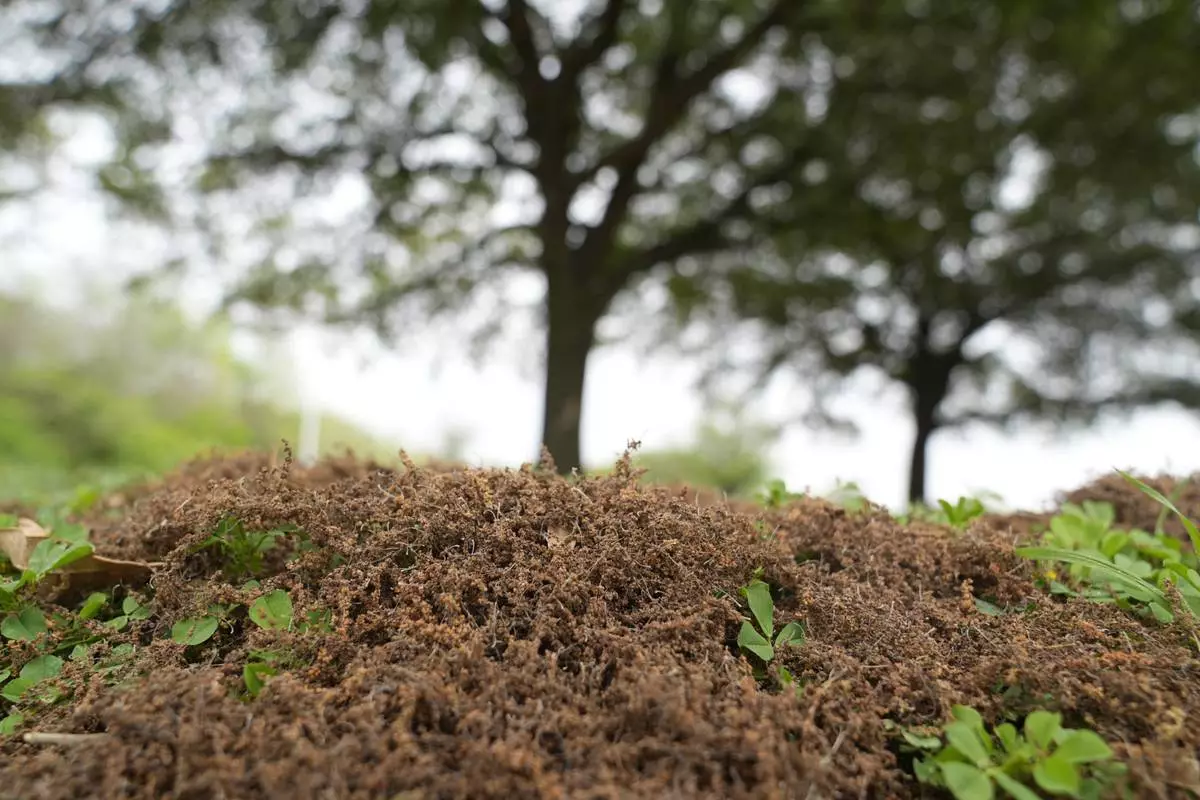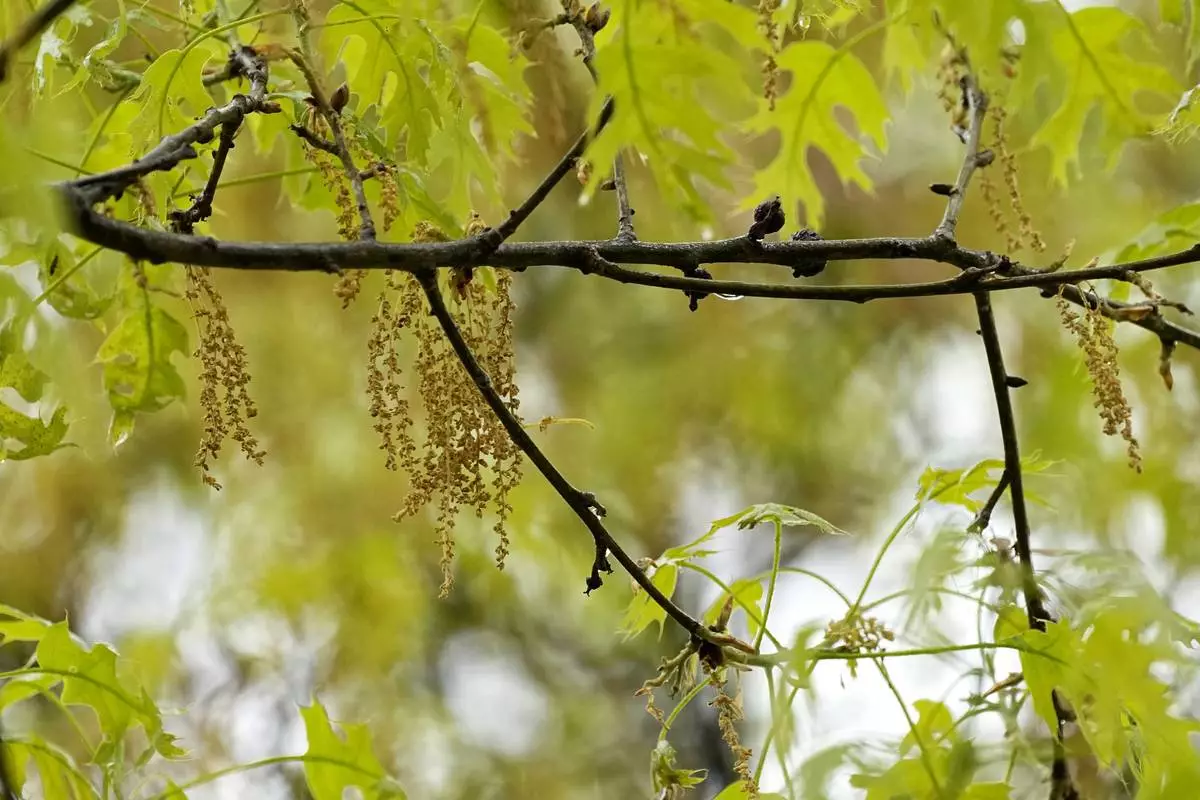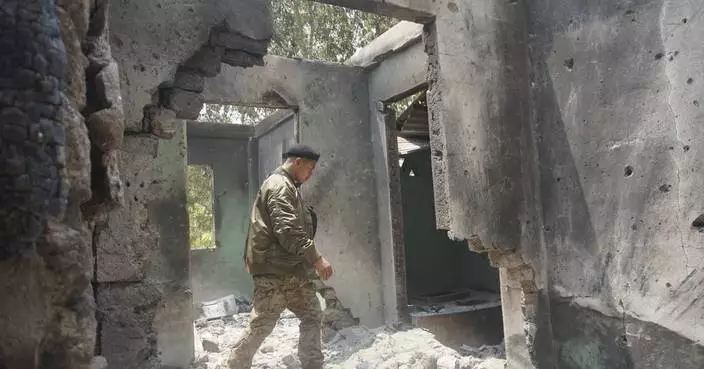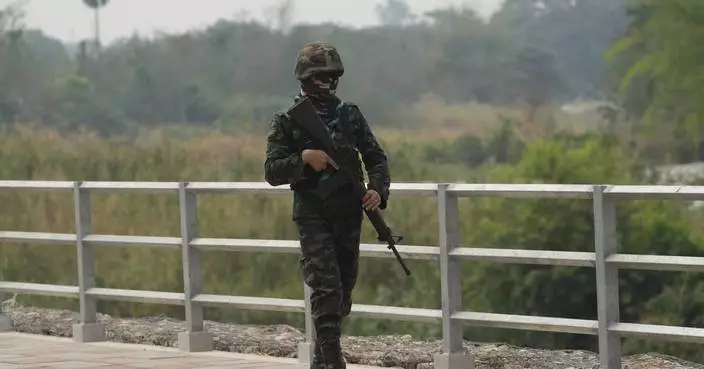An information blackout under Myanmar's military junta worsened Thursday as fiber broadband service, the last legal way for ordinary people to access the internet, became intermittently inaccessible on several networks.
Authorities in some areas have also begun confiscating satellite dishes used to access international news broadcasts.
Protests against the the Feb. 1 coup that ousted the elected government of Aung San Suu Kyi continued Thursday despite the killing of 11 people by security forces a day earlier.
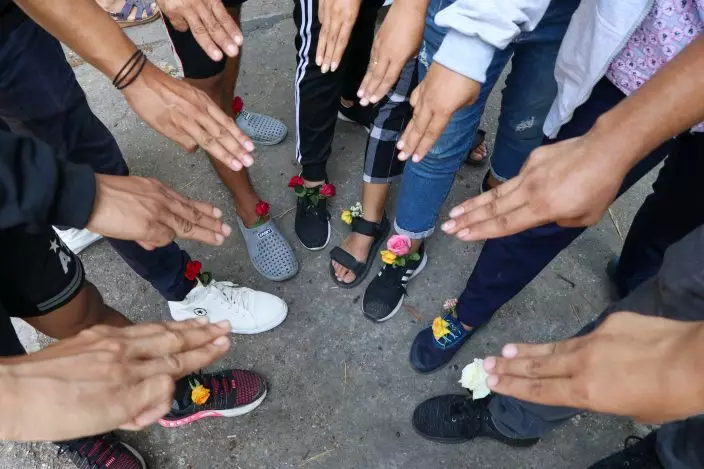
Anti-coup protesters show a three-fingered symbol of resistance with flowers in their shoes as they gather at Kamayut township in Yangon, Myanmar Thursday, April 8, 2021. They walked through the markets and streets of Kamayut township with slogans to show their disaffection for military coup. (AP Photo)
It was unclear if the internet interruptions for at least two service providers, MBT and Infinite Networks, were temporary. MBT said its service was halted by a break in the line between Yangon and Mandalay, the country’s two biggest cities, but internet users had been complaining for the past week of major slowdowns in the services.
The junta has gradually throttled internet service since the coup. It initially imposed a largely ineffective block of social media such as Facebook and then cut mobile data service, the most common way of connecting to the internet, but only at night. As the junta increased its use of deadly force against protesters it also imposed a total ban on mobile data use.
At least 598 protesters and bystanders have been killed by security forces since the takeover, according to the Assistance Association for Political Prisoners, which monitors casualties and arrests.
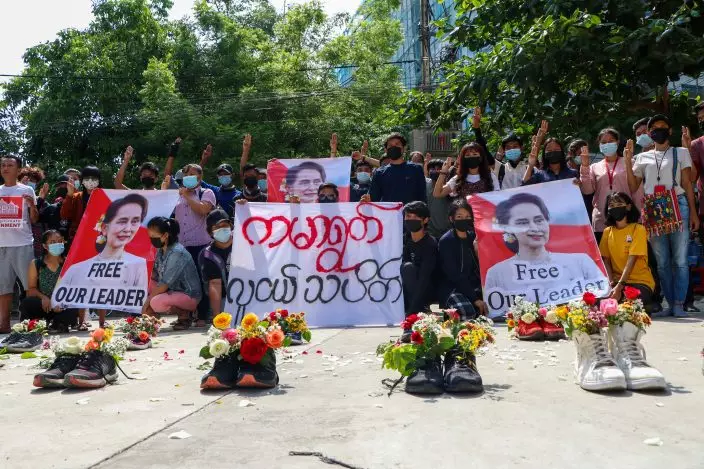
Anti-coup protesters gather at Kamayut township in Yangon, Myanmar Thursday, April 8, 2021, with shoes willed with flowers. They walked through the markets and streets of Kamayut township with slogans to show their disaffection for military coup. A sign, center, reads " Kamayut Youth Strike." (AP Photo)
The use of satellite television as a source of information also appeared to be under threat. In Laputta and other towns in the Irrawaddy Delta southwest of Yangon, local government vehicles announced over loudspeakers that it was no longer legal to use satellite dishes and they must be turned in at police stations. Police also raided shops selling the dishes and confiscated them.
Online news services Khit Thit Media and Mizzima said similar measures were taken in Mon state in the country’s southeast. Satellite TV offers access to international sources of news about Myanmar.
Since the coup, all non state-owned daily newspapers have stopped publishing and online news sites have come under severe pressure. Five popular independent news services had their operating licenses revoked in early March and were told to stop publishing and broadcasting on all platforms, but mostly defied the orders. Other agencies have been sued over their coverage.

Anti-coup protesters walk through a market with images of ousted Myanmar leader Aung San Suu Kyi at Kamayut township in Yangon, Myanmar Thursday, April 8, 2021. They walked through the markets and streets of Kamayut township with slogans to show their disaffection for military coup. (AP Photo)
About 30 journalists arrested since the coup remain detained. Roughly half of them have been charged with violating a law covering circulation of information that could hurt national security or disturb public order. The offense is punishable by up to three years in prison.
In an open letter on Tuesday to Myanmar’s military government, the New York-based Committee to Protect Journalists called for “the immediate and unconditional release of all journalists detained in the aftermath of your February 1 suspension of democracy and imposition of emergency rule.”
The group said that since the military’s takeover, “press freedom conditions have rapidly and drastically deteriorated in your country. News reports indicate journalists have been beaten, shot and injured by live bullets and arbitrarily arrested and charged by security forces while merely doing their jobs of covering the demonstrations and your regime’s retaliatory clampdown.”
Thursday’s protests included ones in Launglone township, in the south of the country, where villagers sang songs and lit candles before dawn and then marched down rural roads, and in the city of Dawei, also in the south, where engineers, teachers, students and others joined in their latest demonstration.
Despite eight killings in Dawei by security forces, opponents of the junta have continued to protest on the streets, avoiding confrontations by varying the starting times and breaking into smaller groups.
On Wednesday, security forces stormed the town of Kalay in northwestern Myanmar where some residents had used homemade hunting rifles to form a self-defense force. Security forces killed at least 11 civilians and injured many others, local news reports said. The state-owned Global New Light of Myanmar newspaper reported Thursday that 18 people described as rioters with homemade weapons had been arrested but said nothing about civilian casualties.



